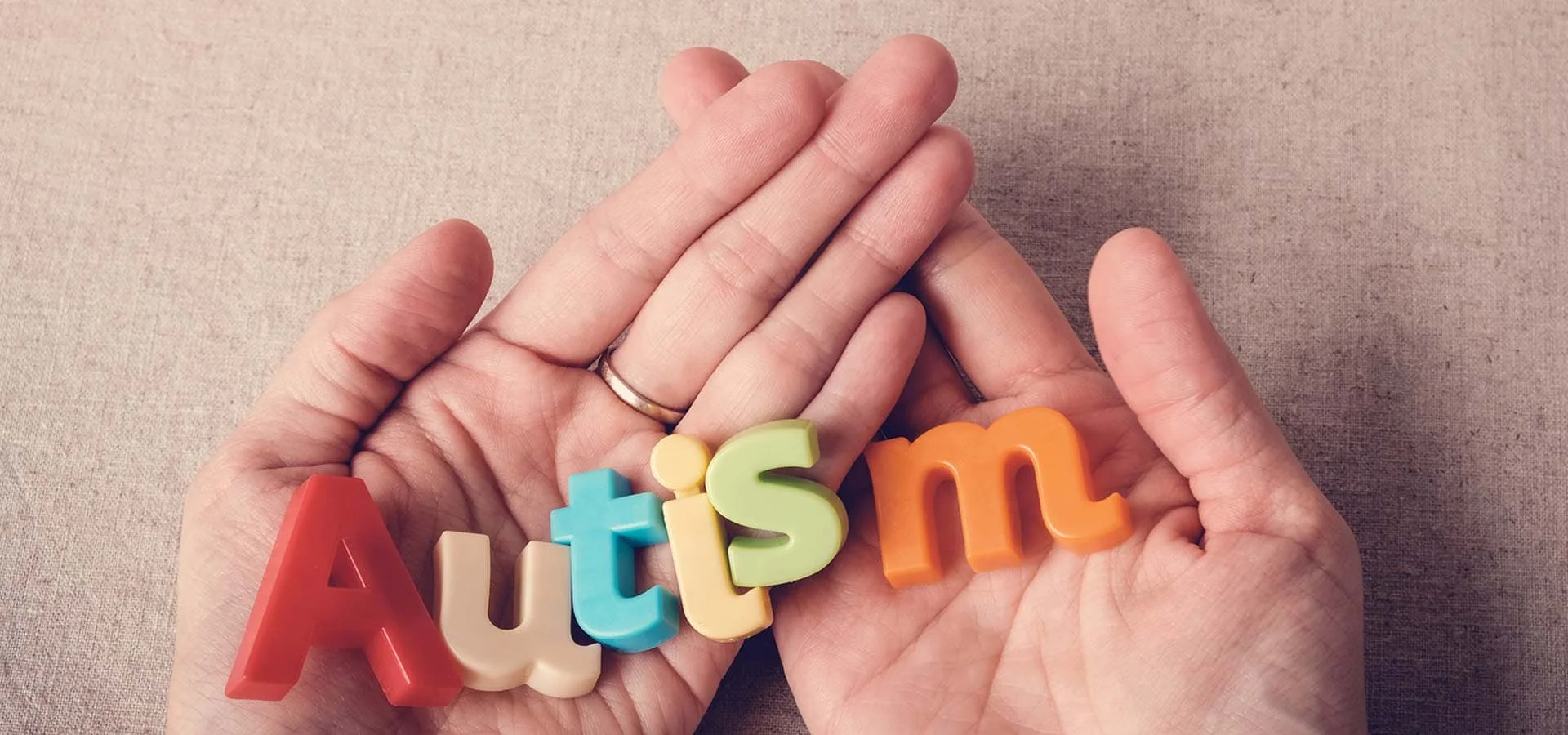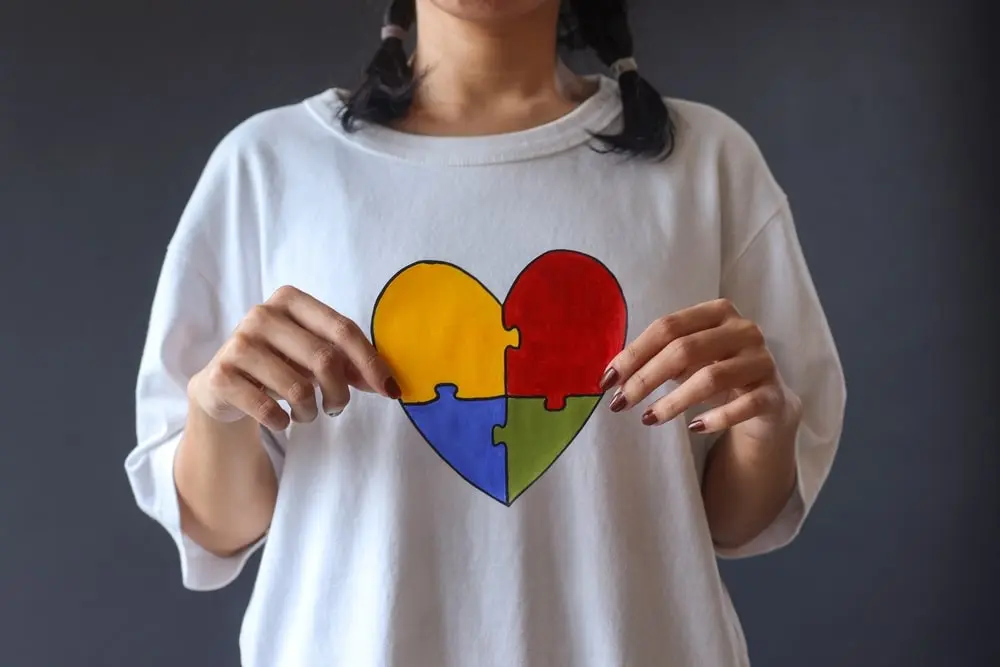Key Takeaways
- Autism in teenagers can present as communication issues, sensory sensitivities, and repetitive behaviors, with varying degrees of intensity and unique individual manifestations, necessitating tailored support strategies.
- Social interaction poses significant challenges for autistic teenagers, impacting the formation and maintenance of friendships, navigating social environments, and acquiring social skills, thus requiring guided assistance and structured learning opportunities.
- Diagnosis, treatment, and parental support strategies for autistic child involve multi-disciplinary assessments, an array of therapeutic interventions and educational accommodations, along with active parental engagement for creating a conducive environment at home.
If you’re wondering about the signs of autism in teens, this straightforward guide is designed to shed light on the behaviors and challenges that may point to autism. From communication hurdles to distinctive social and sensory traits, we provide essential insights to help you recognize these signs early. This article offers a clear path forward for anyone noticing potential signs of autism in teens development.
Recognizing Autism Symptoms in Teenagers
The manifestation of autism in teenagers can differ significantly, often becoming more pronounced in the early teenage years. Symptoms such as communication challenges, sensory sensitivities, and repetitive behaviors and routines are commonly observed. Identifying these symptoms might be complex due to their fluidity; they can evolve or improve over time. Some autistic teenagers might seem outgoing but fail to pick up on subtle social cues, while others may appear more introverted. This underlines the importance of recognizing the multifaceted nature of these symptoms.
Teenagers with autism might have difficulty with:
- Conversational turn-taking
- Speaking excessively about special interests
- Literal interpretation of language
- Atypical vocal characteristics
Repetitive behaviors, a central component of autism’s definition, can be more intense and persistent in autistic teens compared to their neurotypical peers. The diversity and fluidity of these symptoms necessitate a detailed exploration, which is why we delve deeper into these areas in the following sections.
Communication Challenges
Autistic individuals have a wide range of communication abilities, from having limited speech to possessing rich vocabulary. However, some may struggle with the use of language for social purposes. Nonverbal communication can be particularly challenging for autistic teenagers, who may struggle with using and interpreting gestures, maintaining eye contact, and grasping social cues.
Autistic teenagers may face difficulties with verbal interaction as they may take language literally and find it hard to understand the abstract or implied meaning in conversations. To aid communication, using visual aids, simple language, pictures, diagrams, and written schedules can be beneficial in helping autistic teenagers communicate their needs more effectively and manage daily routines.
Sensory Sensitivities
Sensory sensitivities are another significant aspect of autism. Autistic teenagers may display a range of sensory sensitivities, including heightened or reduced reactions to:
- sights
- sounds
- smells
- tastes
- touch
- balance
- movement
- internal body cues
Heightened sensitivity can lead to sensory overload, triggering negative reactions to loud noises, certain textures, and bright lights.
Common situations that may result in sensory discomfort or overload include exposure to scratchy fabrics, noisy school environments, and crowded social gatherings. To support autistic children with sensory sensitivities, strategies encompass the use of fidgets, noise-cancelling headphones, controlled sensory input, and providing private, calm retreat spaces.
Additionally, engaging in calming activities and utilizing sensory aids like chew toys or weighted blankets can facilitate self-regulation for autistic teenagers experiencing sensory overload.
Repetitive Behaviors and Routines
Repetitive behaviors, a key aspect of autism, are noteworthy in the context of autistic teenagers. These repetitive behavior patterns are categorized into ‘lower-order’ and ‘higher-order’ behaviors. Lower-order behaviors include hand-flapping, fidgeting, body rocking, body language, and vocalizations while higher-order behaviors consist of routines, rituals, and intense interests.
Autistic children, as well as the younger children, may develop compulsive behaviors, become deeply attached to certain objects, and be upset by changes in routine. These can be considered as some of the autistic traits. Examples of repetitive routines and behaviors can include in autistic traits:
- Walking in a specific way
- Placing food separately
- Knocking on objects
- Making indecipherable noises
‘Stimming‘, a subset of repetitive movements, is utilized by some autistic children to help manage anxiety and deal with overwhelming sensations or emotions. The range and expression of repetitive behaviors and routines are diverse and unique to each individual autistic teen.
The Impact of Autism on Teenage Social Life
Autism in teens may manifest as numerous emotional difficulties such as connecting emotionally, feeling social isolation, and uncertainty in responding to others’ emotions during social interactions. These challenges can significantly impact their social life, making the process of forming and maintaining friendships, navigating social situations, and developing social skills quite daunting for autistic children. To navigate these social challenges, signs of autism in teens require additional support and understanding that is tailored to their individual needs.
As we proceed, we aim to provide a comprehensive understanding of how autism impacts the social life of teenagers. We will elaborate on the complexities of initiating and preserving friendships, steering through social situations, and the paramount task of cultivating social skills. These aspects are essential for all teenagers, but they hold even more significance for those on the autism spectrum.
Forming and Maintaining Friendships
Forming and maintaining friendships can be a significant challenge for autistic teens, often resulting in having few or no friends. They typically:
- Prefer solitude
- Enforce unique play rules
- Have difficulty grasping and following the conventional social rules of friendship
- Battle with understanding the thoughts and feelings of others, causing unintentional social missteps and potentially offensive behavior due to a lack of strategy or understanding of how to respond to others’ emotions in social contexts.
Despite these challenges, autism in teens might experience more positive social interactions and develop friendships more successfully within organized social groups or among peers who share similar interests and accept their social differences. Nurturing these friendships can be instrumental in their social development and overall well-being.
Navigating Social Situations
The fear of not understanding the social norms and the intentions of others makes it difficult for autism in teens to engage in conversations with strangers, especially in group settings like school events or parties. This fear can limit their social interactions, making it essential for them to receive support and guidance to navigate these situations.
Developing Social Skills
Developing social skills is a crucial aspect of any teenager’s life, and for autistic teens, this can be quite challenging. However, teaching autism in teens about complex social interactions can be done through various methods, including:
- Social stories
- Verbal and non-verbal communication skills
- Role-playing
- Group sessions
- Evidence-based interventions like Cognitive Behavior Therapy
By utilizing these strategies, you can effectively build the social competence of autistic teens.
Parental involvement in reinforcing social skill training at home is crucial, alongside education for non-autistic adolescents to create a supportive friendship environment, coupled with programs like peer buddy systems and adult-facilitated social interaction for enhanced social communication.
Autistic teens can reduce anxiety in social situations by learning basic social rules, understanding how to process and respond to verbal cues like tone of voice, and mastering body language interpretation. Structured settings and experiential programs such as residential treatment centers and the START Program offer safe spaces for autistic teens to practice and self-monitor social interactions through therapy and recreational activities.
Autism Diagnosis and Assessment in Teenagers
The process of diagnosing autism in teenagers involves:
- Observing the child’s behavior
- Interviewing the child and their parents
- Reviewing the child’s developmental history
- Evaluating the child’s functioning and medical condition
This process is carried out by health and child development professionals who assess the teen’s strengths, differences, and difficulties, often working within a multidisciplinary team to support the child’s development.
These professionals use the Diagnostic and Statistical Manual of Mental Disorders (DSM-5-TR), which outlines specific criteria that must be met for an autism spectrum disorder diagnosis. As we proceed, we will further elaborate on the contributions of healthcare professionals and the assorted assessment methods employed for diagnosing autism in teenagers.
Role of Healthcare Professionals
A multidisciplinary team, including:
- GPs
- Pediatricians
- Psychiatrists
- Psychologists
- Occupational therapists
- Speech pathologists, who provide speech therapy
is involved in assessing and diagnosing autism in teenagers. These healthcare providers utilize developmental screening tools and specific diagnostic tools for the screening and diagnosis of autism spectrum disorders.
It is crucial for healthcare professionals to adhere to the guidelines and recommendations related to developmental surveillance and screening for autism in teenagers. Their role is paramount in ensuring the accurate diagnosis and subsequent support provided to autistic teens and their families.
Assessment Methods
Assessment methods for autism in teenagers, also known as autism assessment, include:
- Comprehensive needs assessment
- Observations in settings such as the child’s school to evaluate daily living skills, communication, and interactions with peers
- Professional tools such as the Autism Diagnosis Interview – Revised (ADI-R) and the Autism Diagnostic Observation Schedule – Generic (ADOS-G) are utilized by relying on information from parents or caregivers and observation of the child’s behavior.
Developmental screening for autism in teenagers is conducted by healthcare providers, utilizing tools that flag the need for a thorough assessment if developmental delays or disorders are indicated. Screening tools like the Ages and Stages Questionnaire incorporate parent reports to structure communication between parents and providers, acknowledging parents as reliable sources of information about their children’s development.
Treatment and Support for Autistic Teens
Autistic adolescents typically engage in therapy for an average duration of two years. They often face a range of challenges such as:
- sleep difficulties
- anxiety
- meltdowns
- depression
- aggressive behavior
- eating disorders
- executive functioning difficulties
- school refusal
To support these teens and younger children, a myriad of therapies, educational accommodations, and community resources are available.
Psychological support for autistic teens should ensure their psychological well-being is prioritized and that efforts are made to adjust non-autistic environments to be more inclusive, aiding social skills development. As we continue, we will delve into greater detail about these treatments and supports.
Therapies for Autistic Teens
Several therapies have proven beneficial for autistic teens. Applied Behavior Analysis (ABA) therapy is supported by research indicating its effectiveness for individuals on the autism spectrum, though careful consideration is needed for implementation barriers. Video modeling is an effective visual instructional strategy that helps autistic teens by showing them desired behaviors through a format they can easily understand and emulate.
Self-management interventions have been validated through meta-analysis, proving effective for students with autism, and are suitable for aiding autonomy in autistic teens. Additionally, autistic teens can receive crucial assistance through therapies such as occupational therapy and speech/language therapy, which are often included in their individualized education programs (IEPs).
Educational Accommodations
Educational accommodations are crucial in assisting autistic teens in their academic journey. Students with autism who have an Individualized Education Program (IEP) or a 504 plan are eligible for accommodations that enable them to complete the same assignments as their peers with adjustments to timing, formatting, or response methods. For hypersensitivity issues, accommodations may include using light covers, earplugs or headphones, avoiding strong scents, or providing soft clothing, while for hyposensitivity, visual aids, fidget toys, arranging safe spaces, and frequent movement breaks can be beneficial.
Behavioral supports such as visual clarifications of rules, token economies for reinforcement, and visual timers for time management, and comprehension aids like pairing visuals with texts, multisensory instruction, and checks for understanding can support autistic students in educational settings. Reading and writing tasks can be supported through audio materials, speech-to-text programs, graphic organizers, sentence starters, while executive functioning may be aided by task analysis, visual schedules, structured organization time, and explicit rubrics.
Adolescent-specific educational interventions have been designed for inclusion in educational settings to assist young adults with Autism Spectrum Disorders.
Community Resources
Various organizations and support groups offer resources and assistance for autistic teens and their families. The National Autism Center, for instance, sets standards and offers resources for treatments and interventions, aiding individuals with autism including teens. The Asperger/Autism Network (AANE) provides information, education, and support assisting those on the autism spectrum through free events, online support, and advocacy.
Support groups and social clubs for autistic teens offer an understanding community to practice social skills and find support. Professionally-led support groups often connected with autism advocacy organizations can aid both autistic children and their parents in developing social skills and shared experiences. Networking with other families with autistic children offers a shared support system and access to valuable experiences and resources.
Parenting Strategies for Supporting Autistic Teens
Parents play a crucial role in supporting their autistic teens. Strategies such as open communication can help manage the challenges faced by teenagers with autism, including helping them navigate unique challenges, such as staying informed and fostering an understanding of their personal struggles. Parents should approach suggesting strategies for an autistic teenager’s symptom management with subtlety and respect for the teen’s wishes, which forms part of creating a supportive home environment.
In cases where managing autistic behavior in teenagers becomes challenging, parents should not hesitate to seek support from professionals and informed communities. In the subsequent sections, we will elucidate further on these parenting strategies.
Fostering Open Communication
Initiating conversations with autistic teens is important as they may struggle with communication and may not always engage on their own. Discussing topics of interest to the autistic teenager can lead to more successful conversations as they often hyperfocus on specific subjects.
Patience and empathy are crucial when talking to an autistic teenager, and it’s important not to take communication challenges personally. It’s important to remember that teenagers, including those with ASD, are still children and their brains are still developing, which can affect their ability to communicate.
Creating a Supportive Environment
Creating a supportive environment at home can significantly help autistic teens. Here are some strategies to consider:
- Establish a consistent daily routine to provide structure and predictability.
- Allow autistic teens to make choices in their daily activities to enhance motivation and engagement.
- Create a personal space for downtime to allow autistic individuals to decompress and manage stress effectively.
These strategies can help create a supportive and comfortable environment for autistic teens at home.
Keeping preferred foods in the home minimizes mealtime stress and supports the dietary preferences of autistic teens. Home therapies should be selected carefully to ensure they are enjoyable and avoid transforming the home environment into a clinical setting. Parents should be observant of the autistic teenager’s stress indicators and ready to explore and mitigate potential sources of distress.
Discussions about safety strategies, including preventing wandering, are crucial in collaboration with healthcare providers and caregivers. Networking with other families with autistic children offers a shared support system and access to valuable experiences and resources.
Seeking Professional Guidance
Parents should not hesitate to seek professional guidance when managing autistic behavior in teenagers becomes challenging. Counselors and psychologists are types of professionals that can provide support to families dealing with autism.
Summary
This guide has explored the signs of autism in teenagers, the impact on their social life, diagnosis and assessment techniques, treatment options, and parenting strategies. By understanding these aspects, we can better support autistic teens in their journey through adolescence. Remember, every autistic individual is unique, and the diversity of their experiences requires a nuanced approach, empathy, and patience.
Frequently Asked Questions
Meet the Author

Bradley Keys
Bradley Keys is an accomplished writer who has covered a wide variety of health, nutrition, and wellness topics. He graduated with a Bachelor of Science from Florida State University, and has extensively explored a diverse range of subjects within the realms of health, wellness, and nutritional supplementation, showcasing a broad and in-depth understanding of these interconnected fields.









